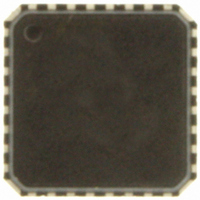ADT7462ACPZ-5RL7 ON Semiconductor, ADT7462ACPZ-5RL7 Datasheet - Page 26

ADT7462ACPZ-5RL7
Manufacturer Part Number
ADT7462ACPZ-5RL7
Description
IC TEMP/VOLT MONITOR 32-LFCSP
Manufacturer
ON Semiconductor
Datasheet
1.ADT7462ACPZ-5RL7.pdf
(81 pages)
Specifications of ADT7462ACPZ-5RL7
Function
Fan Control, Temp Monitor
Topology
ADC, Comparator, Multiplexer, Register Bank
Sensor Type
External & Internal
Sensing Temperature
-40°C ~ 125°C, External Sensor
Output Type
SMBus™
Output Alarm
No
Output Fan
Yes
Voltage - Supply
3 V ~ 5.5 V
Operating Temperature
-40°C ~ 125°C
Mounting Type
Surface Mount
Package / Case
32-LFCSP
Supply Voltage (max)
5.5 V
Supply Voltage (min)
3 V
Maximum Operating Temperature
+ 125 C
Minimum Operating Temperature
- 40 C
Lead Free Status / RoHS Status
Lead free / RoHS Compliant
Other names
ADT7462ACPZ-500RL7
ADT7462ACPZ-500RL7
ADT7462ACPZ-500RL7TR
ADT7462ACPZ-500RL7TR
ADT7462ACPZ-5RL7TR
ADT7462ACPZ-500RL7
ADT7462ACPZ-500RL7TR
ADT7462ACPZ-500RL7TR
ADT7462ACPZ-5RL7TR
Available stocks
Company
Part Number
Manufacturer
Quantity
Price
Company:
Part Number:
ADT7462ACPZ-5RL7
Manufacturer:
ON Semiconductor
Quantity:
135
STICKY STATUS BIT
Status and Mask Registers and ALERT
Status Registers
high and low limit. The measured values are compared with
these programmable limits. The results of these
comparisons are stored in the status registers. A Logic 0 in
the status register represents an in−limit comparison, while
a Logic 1 represents an out−of−limit comparison.
register is read by the SMBus master. Once read, the status
bit is cleared if the error condition has gone away. The status
registers are duplicated to accommodate situations where
there are two SMBus masters. If one master reads the host
status registers and consequently clears them, the second
master has no way of knowing what bits were set and what
bits were cleared. The second SMBus master can read from
the duplicate BMC status registers to determine which status
bits were set.
addresses.
ALERT Output
asserted when one of the status bits is set. This is to alert the
master that an out−of−limit measurement has taken place or
that there is a fault on one of the fan channels.
in any of the registers.
status bits behave. When a limit is exceeded, the
Table 19. Status Registers
Thermal Status Register 1
Thermal Status Register 2
Thermal Status Register 3
Voltage Status Register 1
Voltage Status Register 2
Fan Status Register 1
Digital Status Register 1
GPIO Status Register
Each measured temperature and voltage has an associated
Once a status bit is set, it remains set until the status
Table 19 is a list of the status registers and corresponding
The ADT7462 has an SMBus ALERT output that is
An ALERT is generated as a result of a status bit being set
Figure 38 shows how the ALERT output and “sticky”
TEMPERATURE
SMBALERT
HIGH LIMIT
Register Name
Figure 38. ALERT and Status Bit Behavior
TEMP BACK IN LIMIT
(STATUS BIT STAYS SET)
Address
0xBA
0xBB
0xBC
0xBD
0xBE
Host
0xB8
0xB9
0xBF
CLEARED ON READ
(TEMP BELOW LIMIT)
Address
BMC
0xC0
0xC1
0xC3
0xC4
0xC5
0xC6
−
−
http://onsemi.com
26
corresponding status bit is set to 1. The status bit remains set
until the error condition goes away and the status register is
read. The status bits are referred to as sticky because they
remain set until read by software. This ensures that an
out−of−limit event cannot be missed, if software is polling
the device periodically. Note that the ALERT output remains
low for the entire duration that a reading is out of limit and
until the status register has been read.
Mask Registers
status bits that generate an ALERT. This is achieved by
setting the appropriate bit in the mask registers. The ALERT
output is not asserted on the setting of a status bit if it has
been masked. The status bit itself is not affected and
continues to be set when an out−of−limit condition exists.
addresses.
Fan Control
Fan Drive Using PWM Control
control fan speed. Control relies on varying the duty cycle
(or on/off ratio) of a square wave applied to the fan to vary
the fan speed. The advantage of using PWM control is that
it uses a very simple external circuit. The specific circuit
used depends upon the type of fan.
fans, and 4−wire fans. The 2−wire fan has only power and
ground connections. The 3−wire fan has power and ground
connections and a TACH output to indicate the speed of the
fan. The 4−wire fan has power and ground connections, a
TACH output, and a PWM input. The PWM input is
connected directly to the PWM drive of the ADT7462 and
is used to control the speed of the fans.
drive signal should be selected. For 4−wire fans, the high
frequency PWM drive signal should be selected.
Using the ADT7462 with 2−Wire Fans
2−wire fan and illustrates how a 2−wire fan can be connected
to the ADT7462. The low frequency PWM mode must be
selected when using a 2−wire fan.
Table 20. Mask Registers
Thermal Mask Register 1
Thermal Mask Register 2
Voltage Mask Register 1
Voltage Mask Register 2
Fan Mask Register
Digital Mask Register
GPIO Mask Register
The user has the option of masking any of the individual
Table 20 is a list of the mask registers and corresponding
The ADT7462 uses pulse−width modulation (PWM) to
There are three main fan types in use: 2−wire fans, 3−wire
For 2−wire and 3−wire fans, the low frequency PWM
Figure 39 shows the most typical circuit used with a
Register Name
Register Address
0x30
0x31
0x32
0x33
0x34
0x35
0x36












